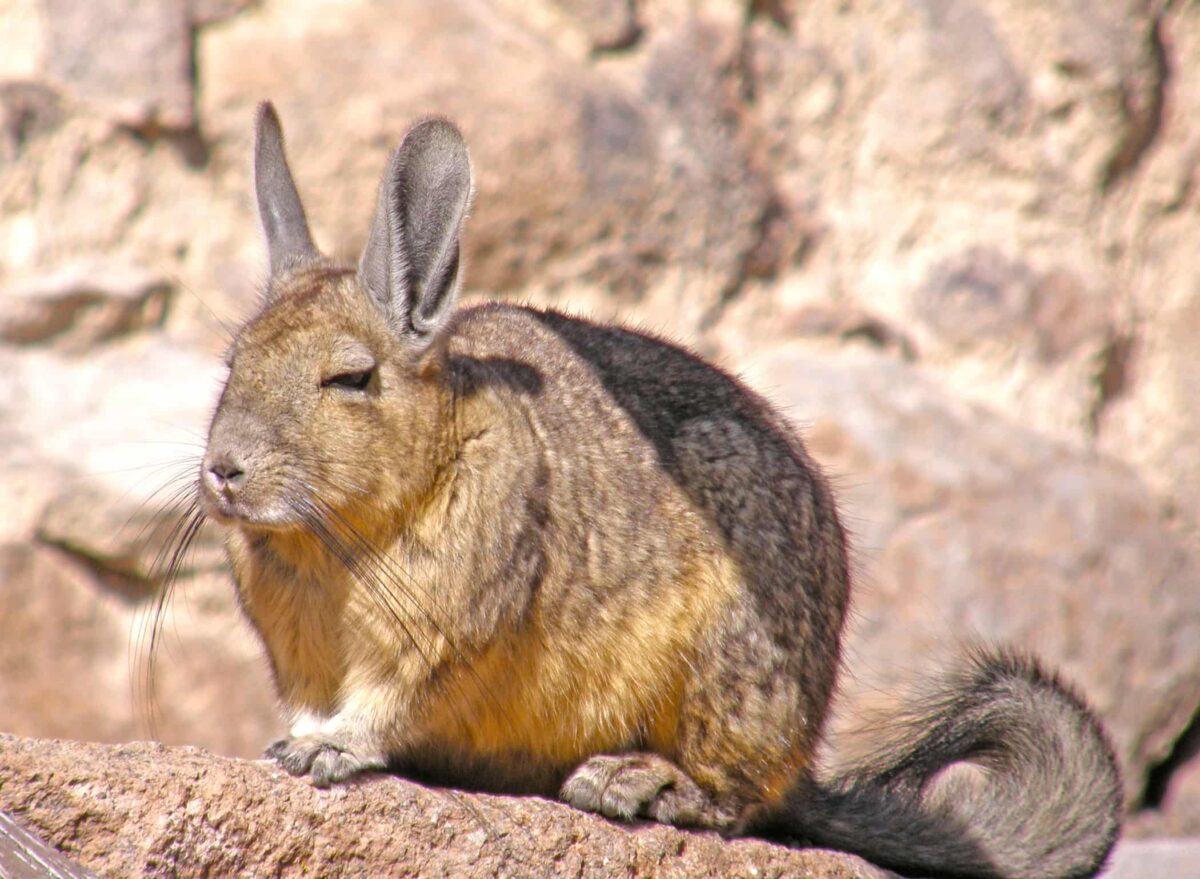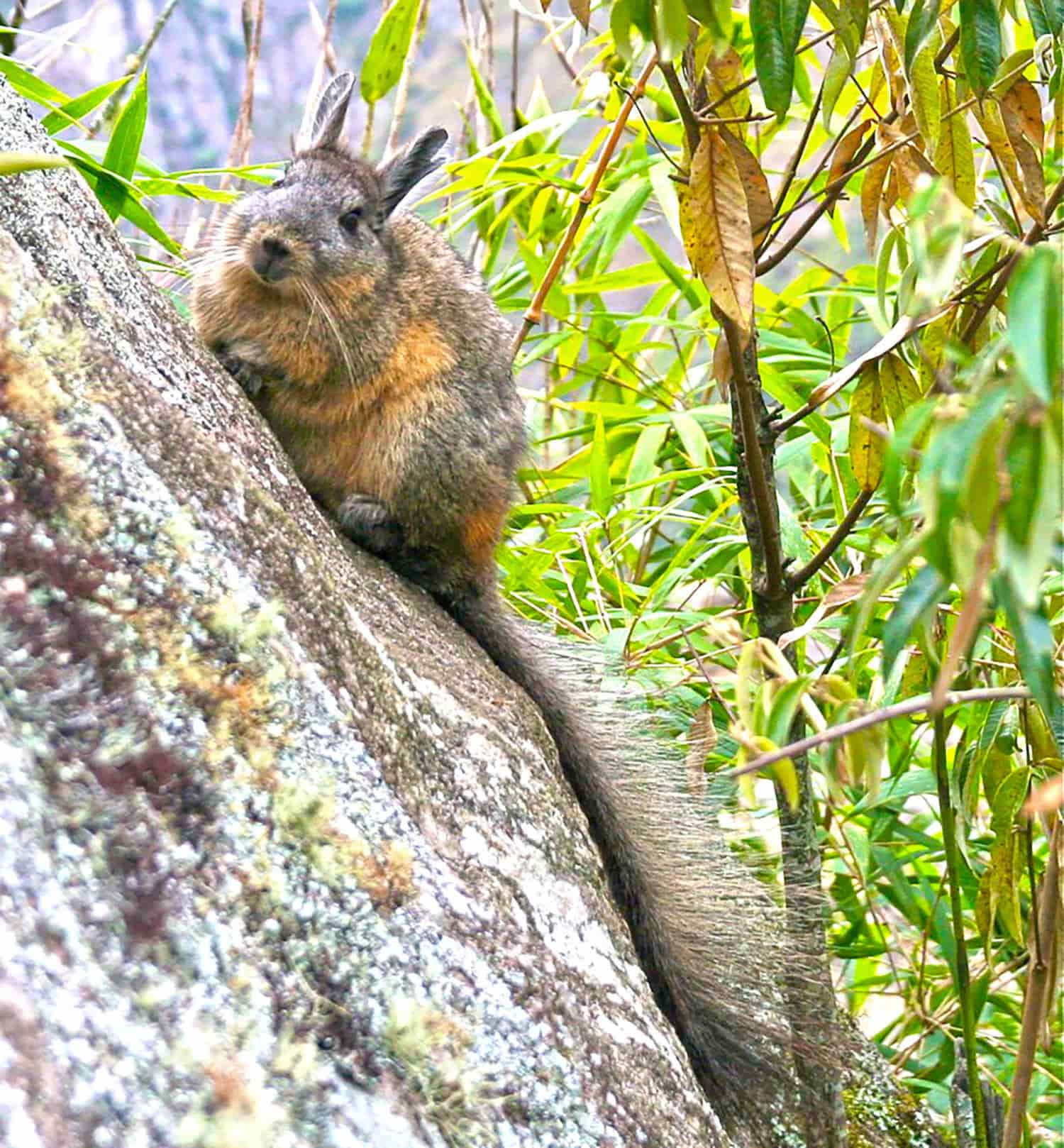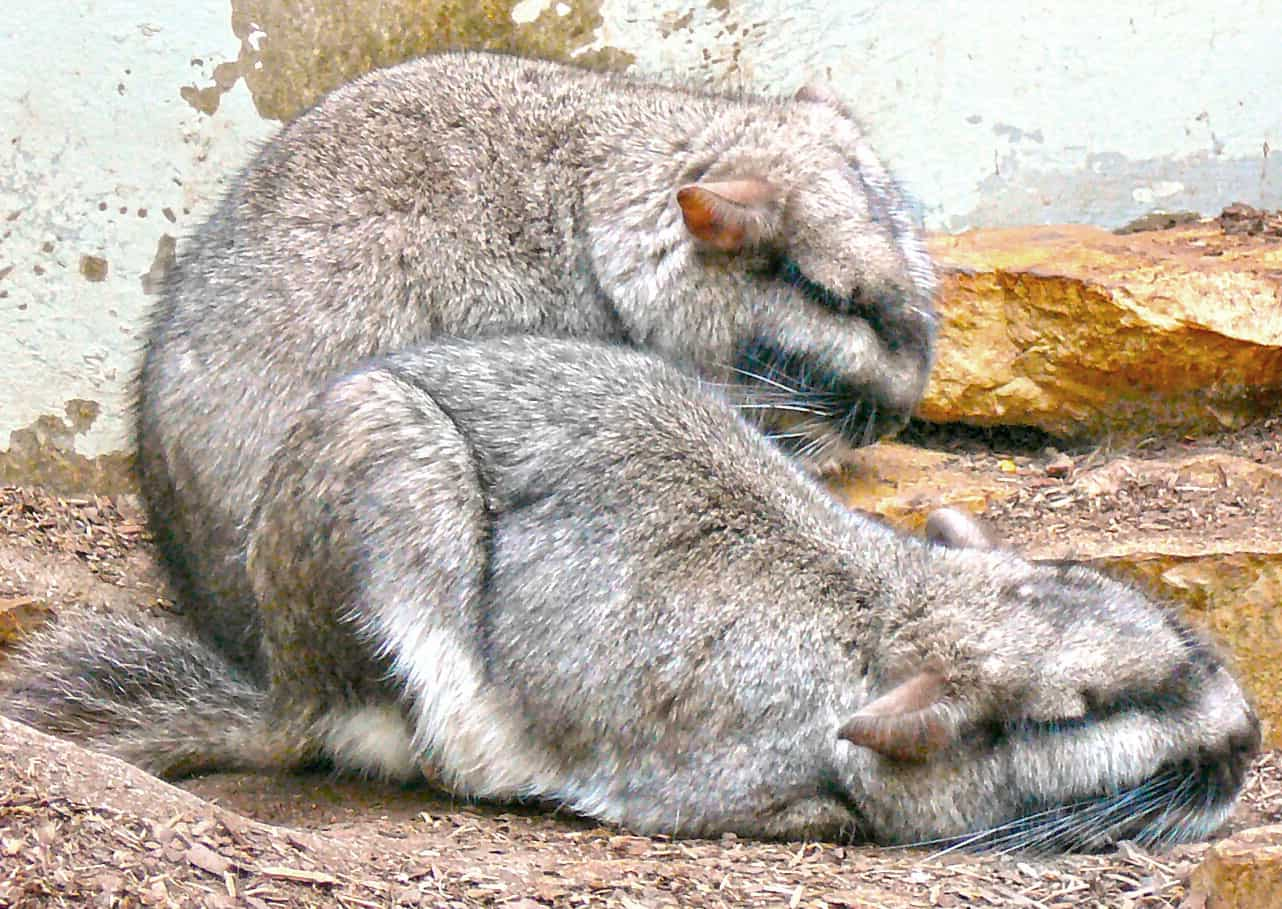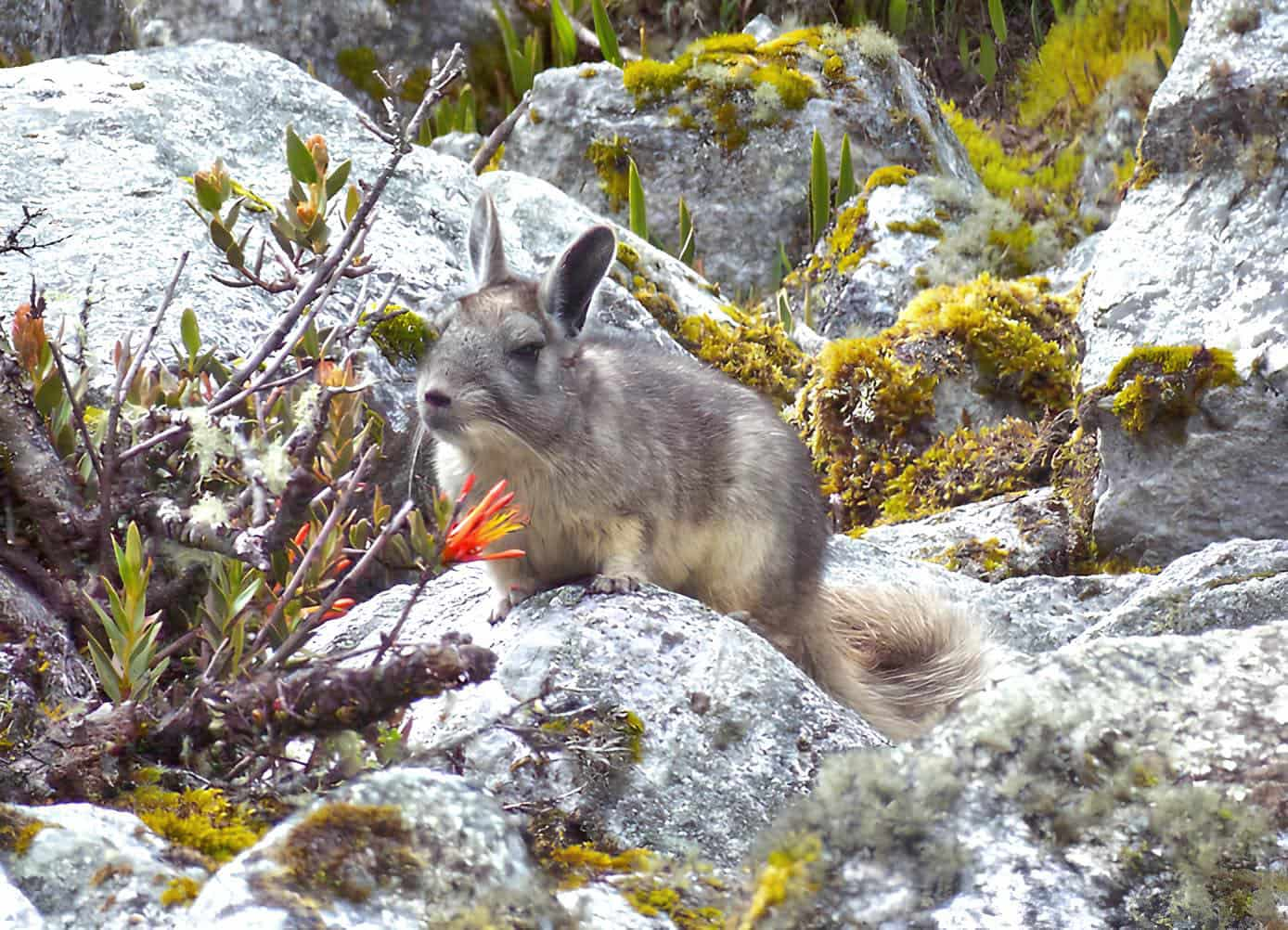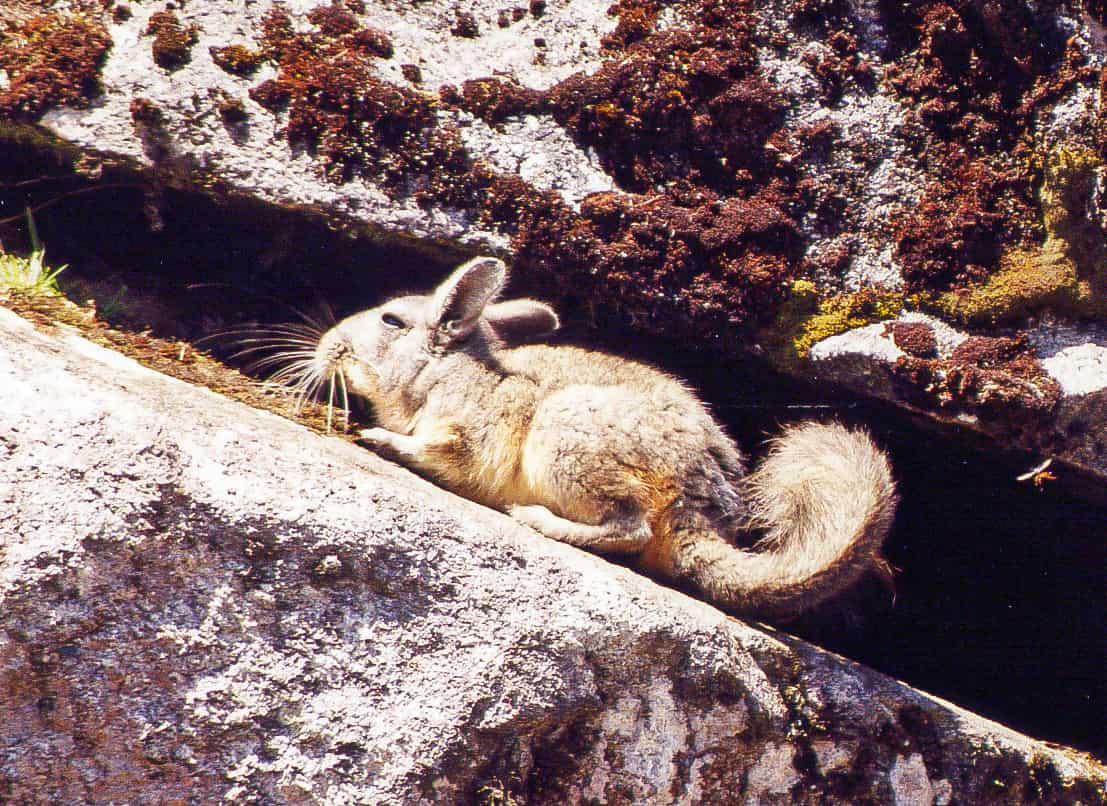- Female southern viscachas have four reproductive organs, but only two are used.
- Southern viscachas inhabit high-altitude, rocky areas in the Andes Mountains.
- They live in colonies of up to eighty individuals, sharing burrows.
The southern viscacha (Lagidium viscacia), also known as the mountain viscacha, is a large (3.3–6.6 lb) rodent-like animal belonging to the family Chinchillidae. They are one of the Andean animals that live in Argentina, Bolivia, Chile, Peru, and Ecuador. There are about 20 different varieties of this rodent, all of which were initially described during the 18th and 20th centuries. The southern viscacha is one of the four species of mountain viscachas and they appear like a rabbit-chinchilla hybrid.
No, they are not rabbits.
Appearance of Southern Viscacha
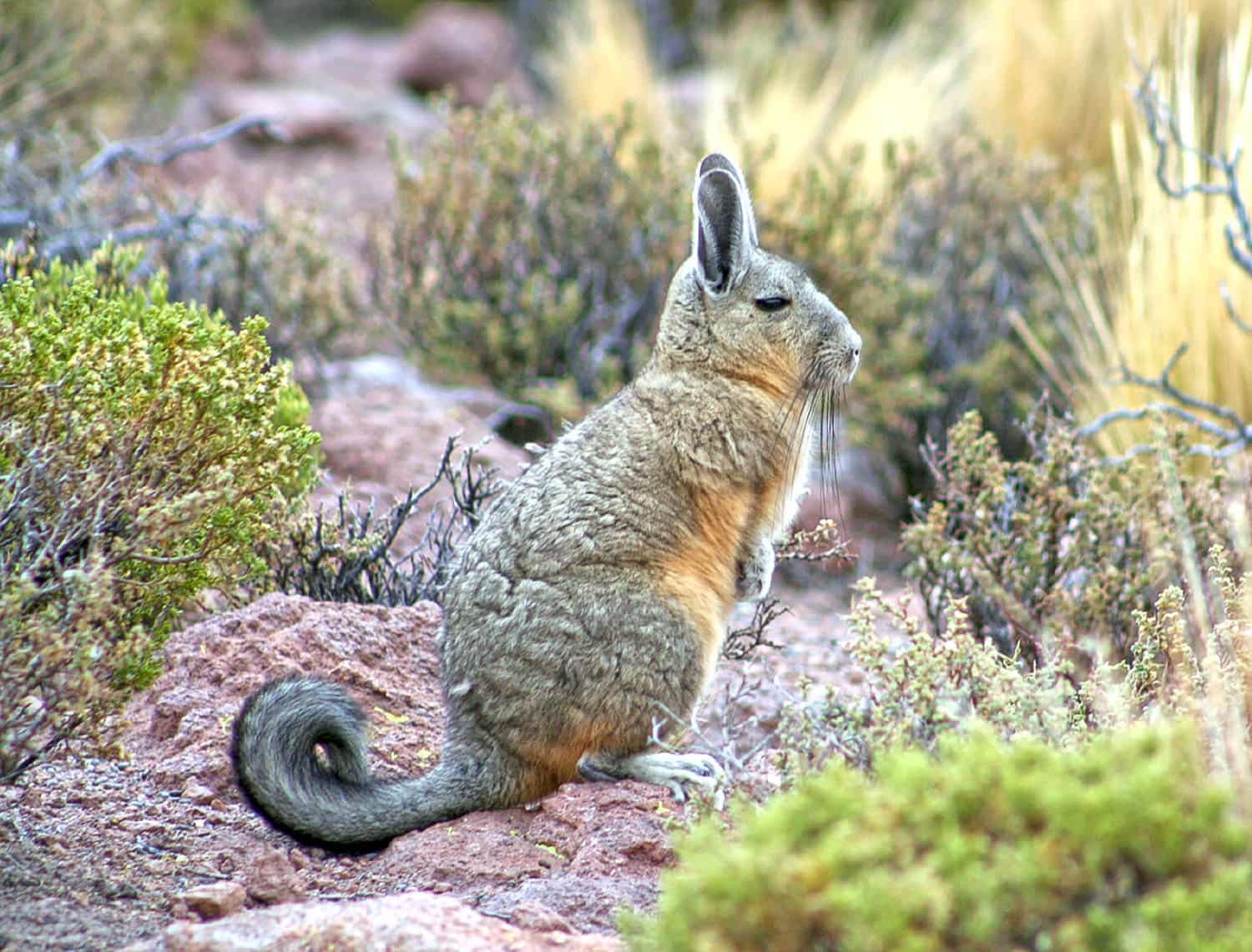
Except for the dense, coarse hair on the tail, the thick, soft fur on the body of a southern viscacha is between 12 and 18 inches in length. Their fur is various shades of gray, brown, and black throughout Bolivia and Chile. The underbelly of the animal’s fur is often white, yellow, or a very light gray. The tails’ coiled tips may be anywhere from red to black.
For comparison, the northern viscacha’s tail is either reddish-brown or black, whereas the southern viscacha’s tip is black. The back of an Ecuadorian southern viscacha is marked with a black stripe. Their ears are long and hairy, and these animals are anywhere from 2 to 6.6 lb in weight. There is also just one set of mammary glands on the female body.
Their primary natural enemy is the Andean mountain cat.
In recent research, 55 adult individuals were separated into groups based on their place of origin and cranial (skull) measurement. Similarities between the individuals from various parts of southern Argentina, northwest Argentina, western Bolivia, and northern Chile were only mild. The coloration on the outside was quite diverse; however, gray tones were more common in the south of Argentina and yellow tones were more common in the northwest.
Where Do They Live?

High in the Andes Mountains of Peru, the southern viscacha can be found at elevations of 10,000 to 16,500 feet above sea level. They are seen from western Bolivia to the southern tip of Argentina and Chile.
The snow line and the woodland line are the boundaries of this area. The distribution of this mountain viscacha is patchy throughout its range; however, it is often found at the local level.
Their lifespan in captivity reaches 19 years.
Distances of more than 6 miles between populations are not unusual for the southern viscacha. The species lives in the Andes Mountains, between the forest and the snow line, in arid, rocky places with little vegetation, dominated by coarse grasses.
Fortunately, succulent plants are more common in humid environments like those found near water. The unusual habitat of the southern viscacha is a result of its agility on rocky slopes and its tendency to seek refuge in cracks and crannies. Burrows are often set up in cracks and other rocky areas.
Nesting sites are established in deep cracks and narrow stone tunnels on huge boulders or rocky cliffs. Despite the high elevations of their habitat (6 to 10 miles high), the species has been found as low as 2000 feet.
Northern viscachas (L. peruanum), another mountain viscacha, are notable for their wide range of coloration within a single population.
What Do Southern Viscachas Eat?
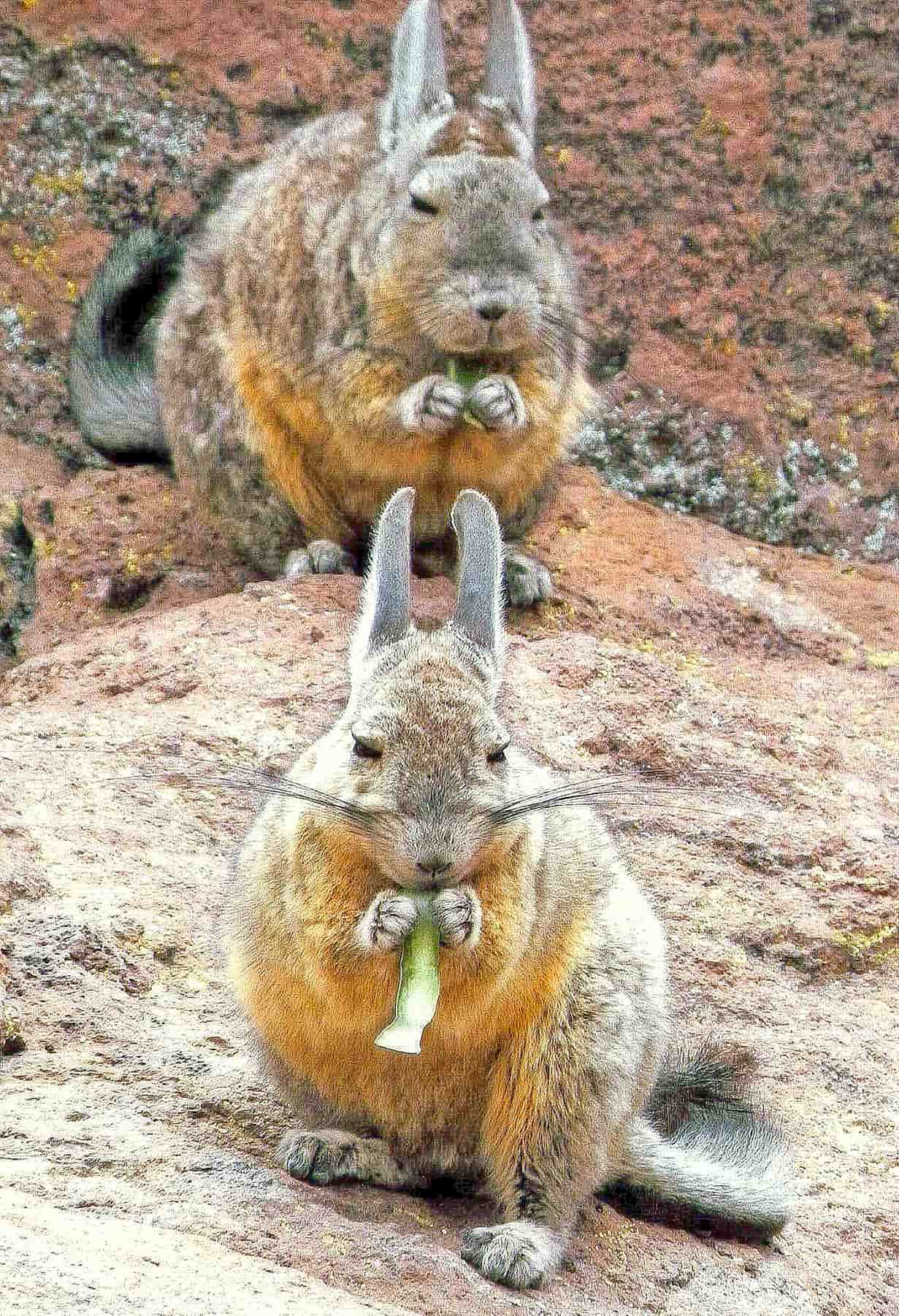
Southern Viscachas consume the tough grasses, lichens, and mosses that make up the habitat’s scant herbaceous cover. They prefer the arid, sparsely vegetated conditions of rocky cliffs, outcrops, and slopes. Colonial in nature, the southern viscacha congregates in small groups and is most active in the early morning and late afternoon. They emerge from their burrows at certain times of the day in order to eat. They do most of their feeding between 3:00 and 6:00 in the evening.
Life in the Colony
Up to eighty individuals may coexist in a southern viscacha colony. Families of two to five individuals share a single burrow within a colony. The creatures aren’t great at digging; therefore, their burrows are in rocky nooks. They are not territorial and seldom display violent behavior.
When mating season arrives, the female evicts the male from the family burrow, and he wanders the colony in search of a new one.
They lounge about on rocks all day, soaking up the sun and grooming their fur. At dusk, individuals return to their burrows after a day of feeding. When startled, the southern viscacha may make short or lengthy hops (more than 6.5 feet high) from one rock to another. They create a high-pitched noise during alerts to warn the colony of danger. That’s why they stay within 230 feet of cover at all times.

Time to Delivery
At one year of age, both sexes of southern viscachas are able to successfully reproduce. Fetuses spend between 100 and 140 days in a mother’s womb. All mature females become pregnant during the mating season, which runs from October through December. One baby is born at the conclusion of each pregnancy.
Due to the long gestation time and the seasonality of mating, it is quite improbable that a female southern viscacha would conceive again in the same year after giving birth. Young are independent early on and thrive on a diet of plant matter supplemented by their mothers’ milk. While females have four reproductive organs total, only the right ovary and uterine horn are really used.
Are the Species in Danger?


Damage to or removal of the right ovary would make the left ovary active. For roughly a month, the mother exclusively breastfeeds her young. Humans increase the danger of predation on viscachas since they are hunted for their fur and flesh. The uterine horn population is in danger due to hunting and requires protection. The species has been classified as “Least Concern” by the International Union for the Conservation of Nature and Natural Resources.
However, conservation efforts are urgently needed for a newly found population of Lagidium ahuacaense in Ecuador, which may number in the hundreds at most.
Subspecies
- Lagidium viscacia viscacia — Molina, 1782
- Lagidium viscacia boxi — Thomas, 1921
- Lagidium viscacia cuscus — Thomas, 1907
- Lagidium viscacia cuvieri — Bennett, 1833
- Lagidium viscacia famatinae — Thomas, 1920
- Lagidium viscacia lockwoodi — Thomas, 1919
- Lagidium viscacia moreni — Thomas, 1897
- Lagidium viscacia perlutea — Thomas, 1907
- Lagidium viscacia sarae — Thomas & St. Leger, 1926
- Lagidium viscacia tontalis — Thomas, 1921
- Lagidium viscacia tucumana — Thomas, 1907
- Lagidium viscacia viatorum — Thomas, 1921
- Lagidium viscacia vulcani — Thomas, 1919

